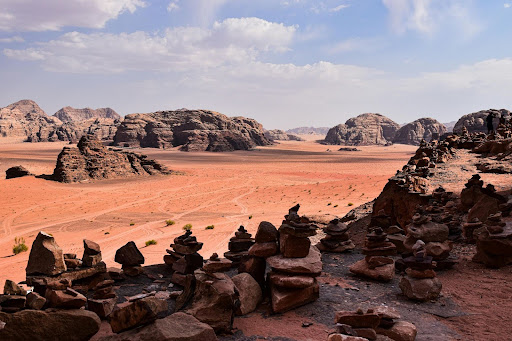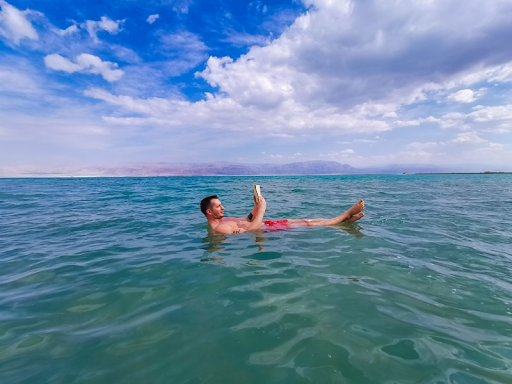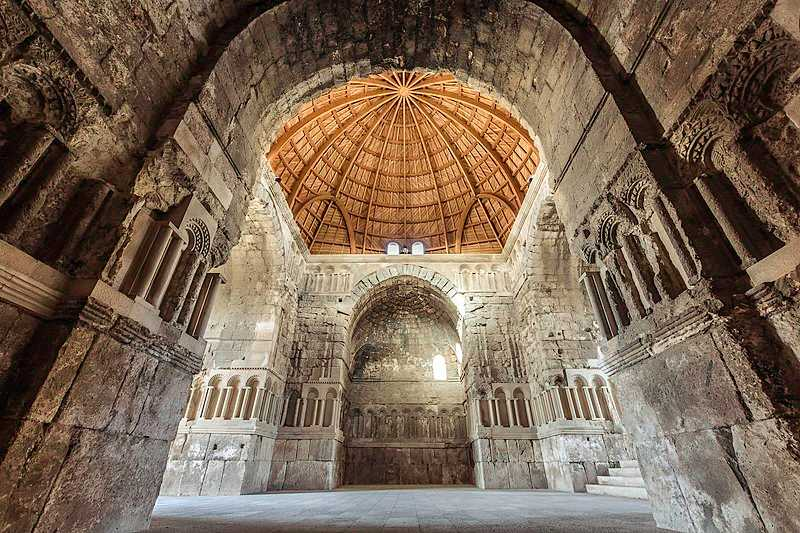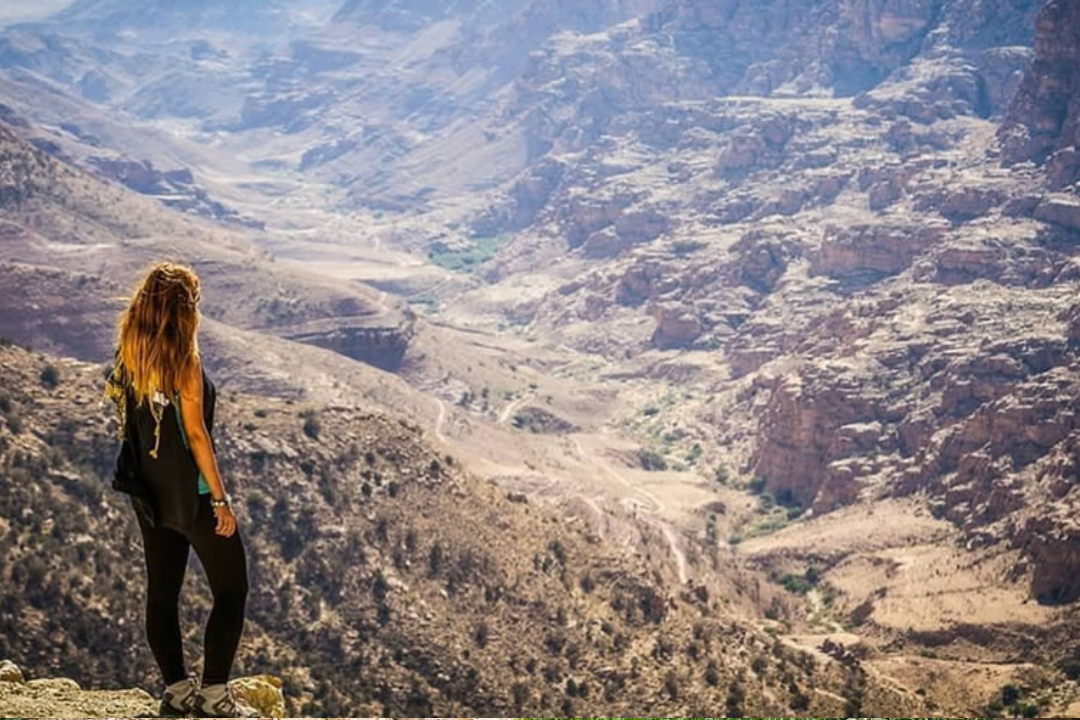Top 10 Historical and Cultural Spots Across Jordan
Top 10 Historical and Cultural Spots Across Jordan

Jordan is an ancient land that has played a pivotal role in the creation of human civilization. It carries the relics of many old civilizations and the traces of numerous fascinating stories. In Jordan, your sense of adventure is ignited as you stand where biblical kingdoms once thrived, gazing at their enduring remains. From the iconic ruins of Petra to the serene waters of the Dead Sea, Jordan's landscape is a living museum of human history.
While world-renowned locations like Wadi Rum and Aqaba draw countless visitors each year, there are numerous lesser-known gems that await exploration. This guide dives deep into both the celebrated and the hidden historic and cultural sites across Jordan, inviting you to uncover the full range of its captivating heritage. Whether you are a history buff, a culture enthusiast, or a curious traveller, Jordan's historical landmarks and cultural experiences promise you an unforgettable journey through time.
1. Petra

Tucked into a narrow wadi and hidden from the world, the metropolis of the Nabataeans has survived for over two thousand years. Here, the Nabataeans meticulously carved their entire city from the rosy stone cliffs. To see these wonders, you must traverse a 160-metre-long rock corridor called The Siq. This slim path strikingly spreads at its end to reveal the Treasury (Al Khazneh), Petra’s most iconic tomb.
The Treasury is the jewel in Petra's crown, but it is just the beginning. Archaeologists have discovered countless other wonders, including temples, tombs, gardens, a theatre, and an altar.
2. Wadi Rum

Wadi Rum, also known as the Valley of the Moon, is one of the most entertaining places in Jordan. The vast open desert and rock formations, reaching heights of up to 1,750m, make it a natural paradise for hikers and rock climbers in the morning. At night, the dark sky is clear from city lights, making it a transparent window into the universe perfect for stargazing. If you feel like flying into the sky, you can get in a microlight and have the time of your life. Nights in Wadi Rum typically end with everyone enjoying a meal next to a campfire before sleeping in a tent under the stars, in the middle of nowhere.
3. Dead Sea

The Dead Sea isn't actually a sea; it's an extremely salty lake where no fish can survive. However, it's not too salty for humans to enjoy. In fact, the Dead Sea is the only salt lake in the world available for swimming. The unique experience of floating effortlessly in its salty waters is just one of many reasons people visit.
The Dead Sea's waters and mud have numerous therapeutic benefits, used to treat skin conditions such as psoriasis and eczema and to relax joints, providing natural relief for joint-related issues. As a result, many luxury resorts and spas offer wellness treatments using Dead Sea products.
Photographic opportunities and historical significance are also among the many reasons to visit the Dead Sea.
4. Jarash

Jerash is an ancient city that boasts some of the best-preserved Roman architecture in the world. Famous for its magnificent colonnades, temples, theatres, and plazas, and renowned for its annual festival of culture and arts, Jerash perfectly blends the ancient with the modern. As one walks past colourful fruit stalls to see the Oval Plaza, the Temple of Artemis, and Hadrian's Arch, one gets a glimpse into life in an ancient empire.
5. Aqaba

Aqaba is the coastal gem of Jordan and its only coastal city. It has been a strategic port city for various civilizations, but beyond its historical and geographical significance, it also offers a wealth of fun and adventurous activities. Jet skiing, flyboarding, and parasailing are just a few of the countless water sports you can enjoy here. If you're thinking of diving in the Red Sea or taking a submarine ride, Aqaba is the place to go.
6. Amman Citadel

Rising majestically above Jordan's capital stands the Amman Citadel. This ancient marvel boasts a 1,700-metre wall, the Temple of Hercules, and the stunning blue-domed Umayyad Palace. After exploring the wealth of historical treasures nestled within its walls, you can enjoy breathtaking panoramic views of Amman. The Amman Citadel is undeniably one of the most captivating destinations in the city and a perfect place to start your journey through Jordan’s past.
7. Umm Qais (Gadara)

Umm Qais, historically known as Gadara, was a crucial part of the trading routes linking Syria with Palestine. As a result, it became part of the Decapolis (ten cities of the Roman Empire) and served as an intellectual capital during the rule of Augustus, attracting writers, artists, philosophers, and poets. Later, Jesus visited and performed the Gadarene swine miracle there.
The scenery of Umm Qais extends beyond its ancient ruins and green lands to include panoramic views of the Sea of Galilee and the Golan Heights.
8. Bethany Beyond the Jordan (Al-Maghtas)

Beyond the Jordan River, Saint John baptised Jesus to fulfil all righteousness. When he did, heaven was opened, and Jesus saw the Spirit of God descending like a dove and alighting on him.
Al-Maghtas, or the Baptism Site, is located on the east bank of the Jordan River near the Dead Sea. The site was home to early human settlements dating back to 3500 BC and held great importance in the Roman Empire, which built the first church dedicated to John the Baptist. During the Byzantine Empire, it became a popular pilgrimage centre.
The Baptism Site features baptism pools, churches, and hermit caves, preserving its rich spiritual and historical legacy and offering visitors a profound experience.
9. Ajloun Castle

A fascinating 12th-century castle strategically positioned atop a hill overlooks the surrounding countryside, serving as a defensive stronghold against Crusader incursions into the region.
Constructed primarily from limestone blocks, the castle features thick walls, numerous towers, and battlements. Its strategic design includes arrow slits, murder holes, and a drawbridge, all intended to thwart enemy advances.
The castle's military functions and architectural features are fascinating. Visitors are more than welcome to walk its well-preserved chambers, corridors, and towers.
10. Dana Biosphere Reserve

The Dana Biosphere Reserve is a diverse and expansive natural area that features a range of mountains and wadis, stretching from the upper reaches of the eastern Rift Valley to the dry lowlands of Wadi Araba. This vast expanse showcases a dramatic elevation drop of over 1,600 metres. The reserve's landscape encompasses three major bio-geographical zones and four distinct vegetation zones, making it a haven for photography and hiking enthusiasts.
Home to over 700 plant species, 215 bird species, and 38 mammal species, many of which are rare or endangered, such as the Nubian ibex, Syrian serin, and caracal, Dana is a must-visit destination for nature lovers and bird watchers.
Hikers can explore more than 10 trails, each offering a unique experience. Visitors interested in local culture can join fruit-drying and jewellery-making workshops to learn traditional crafts from the locals.
The Dana Biosphere Reserve is a model for eco-tourism and sustainable development, with initiatives to support local communities and protect the natural environment. It is the perfect destination for hikers, birdwatchers, photographers, and nature enthusiasts.